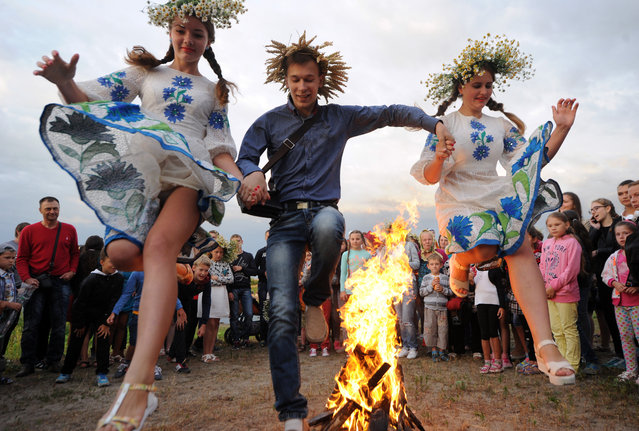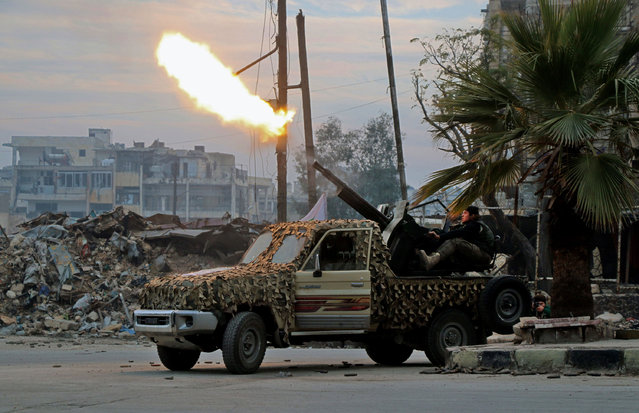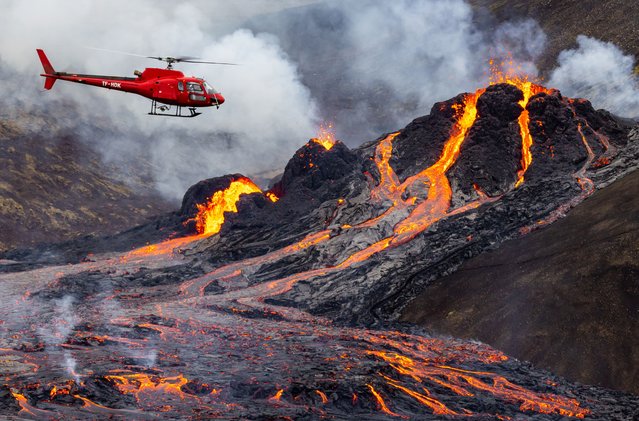
Young people jump over a bonfire as they take part in the Ivan Kupala Night celebration, a traditional Slavic holiday, outside the small town of Turov, some 270 km south of Minsk, on July 6, 2016. People celebrate Kupala Night with bonfires that last throughout the night with some leaping over the flames as it is believed that the act of jumping over the bonfire cleanses people of illness and bad luck. (Photo by Sergei Gapon/AFP Photo)
19 Aug 2018 00:01:00,post received
0 comments







